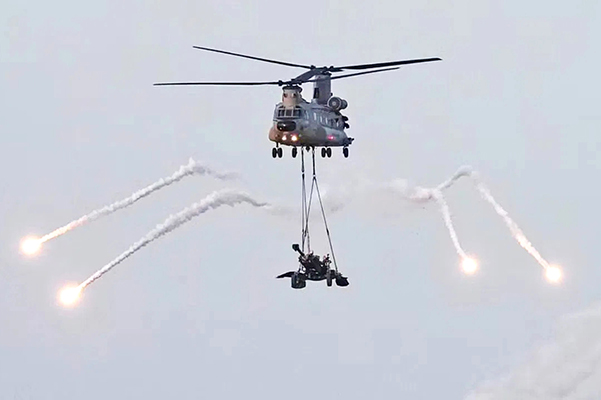Exercise Gaganshakti-2024, to test the Indian Air Force’s its preparedness to counter potential threats from Pakistan and China simultaneously, was conducted over 10 days from April 1, 2024 and surpass the scale of the 2018 exercise, which saw the participation of nearly 1150 aircraft. The wargame sought to evaluate integrated war-fighting strategies and tactics in collaboration with the Indian Army and the Indian Navy.
The IAF has strengthened its arsenal with advanced weaponry, following the aftermath of Operation Balakot and subsequent skirmishes with the Pakistan Air Force (PAF). The induction of French Rafale fighter jets, indigenous Light Combat Helicopters (LCH) like Prachand, and C-295 transport aircraft, integration of BRAHMOS supersonic cruise missiles with Sukhoi fighter jets, along with the addition of Meteor beyond-visual-range air-to-air missiles (BVRAAM) to the Rafale fleet, has significantly enhanced the IAF’s combat capabilities.
Additionally, the acquisition of Russian S-400 surface-to-air missiles and the indigenous Astra Beyond Visual Range (BVR) Air-to-air missile has augmented the IAF’s air defence capabilities. The deployment of the LCA ‘Tejas’ aircraft, particularly along the western and northern frontiers, underscores India’s commitment to leveraging indigenous technology for defence preparedness.
Demonstrating proactive stance in countering regional threats against the backdrop of strained relations with China, intensified by clashes in the Galwan Valley, the IAF’s swift response and deployments such as the Light Combat Helicopter (LCH) in Eastern Ladakh, Rafale jets conducting long-duration flights in the Indian Ocean Region underscores the importance of readiness and preparedness in safeguarding national interests.
Gaganshakti-2024 followed in the footsteps of Vayu Shakti, a mega firepower demonstration conducted by the IAF in the Thar desert.
Serving as a testament to India’s evolving defence capabilities and its resolve to meet emerging security challenges head-on, Gaganshakti-2024 highlighted network-centric operations, incorporating unmanned aerial vehicles (UAVs) and swarm drones, in line with evolving combat doctrines.
READ MORE: DEFENCE REVIEW 2023 – IAF Indigenisation and Atmanirbharta Efforts
As part of the ongoing exercise Gagan Shakti-24, IAF aircraft recently operated from the Emergency Landing Facility (ELF) in the northern sector in Kashmir valley. A large number of troops were airlifted and subsequently, air landed utilising Chinook, Mi-17 V5 and ALH Mk-III helicopters by night. IAF plans to practice similar drills in coordination with different state governments for the activation of ELFs in other sectors too.
The purpose of these exercises is to give a platform for various air forces to engage in the exchange of knowledge, the sharing of best practices, the accomplishment of joint training, and the formation of personal relationships, all of which serve as vital intangibles in the process of developing synergy during joint operations.
Last Exercise for MiG-21s
This was the last major exercise in which the MiG-21 Bisons participated ahead of their upcoming retirement. The MiG-21, India’s first supersonic fighter whose induction began in 1963, will be pulled out of service by 2025. IAF currently operates only two MiG-21 squadrons — the No.3 or Cobras at Nal near Bikaner and No.23 or Panthers at Suratgarh, both in Rajasthan. A squadron consists of 16 to 18 fighter jets. Both squadrons operate the MiG-21 Bison, the last variant of the single-engine workhorse.
Despite the West’s effort to malign MIG-21, it lasted 70 years. No other fighter plane can boast of that long life. As of the start of 2024, 14 nations operate a total of roughly 225 MiG-21s in service.
IAF has operated a raft of MiG-21 variants — Type 74 or MiG 21F, Type 76 or MiG 21PF, Type 77 or MiG 21FL, Type 96 or MiG 21M, Type 75 or MiG 21 Bis (upgraded Type 96) and the MiG-21 Bison.


















